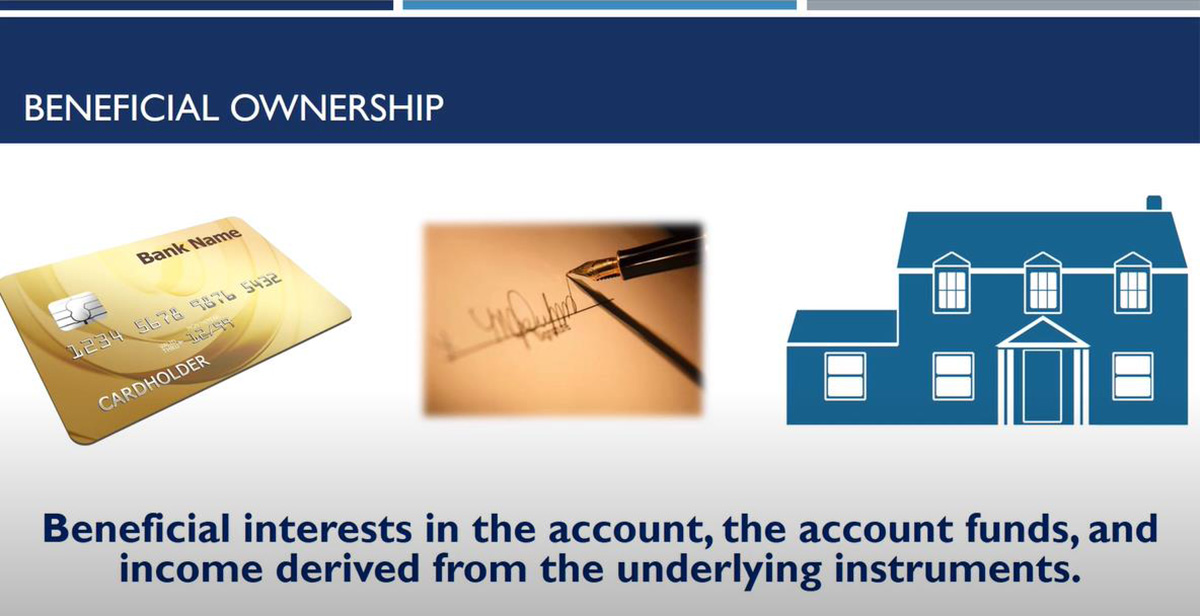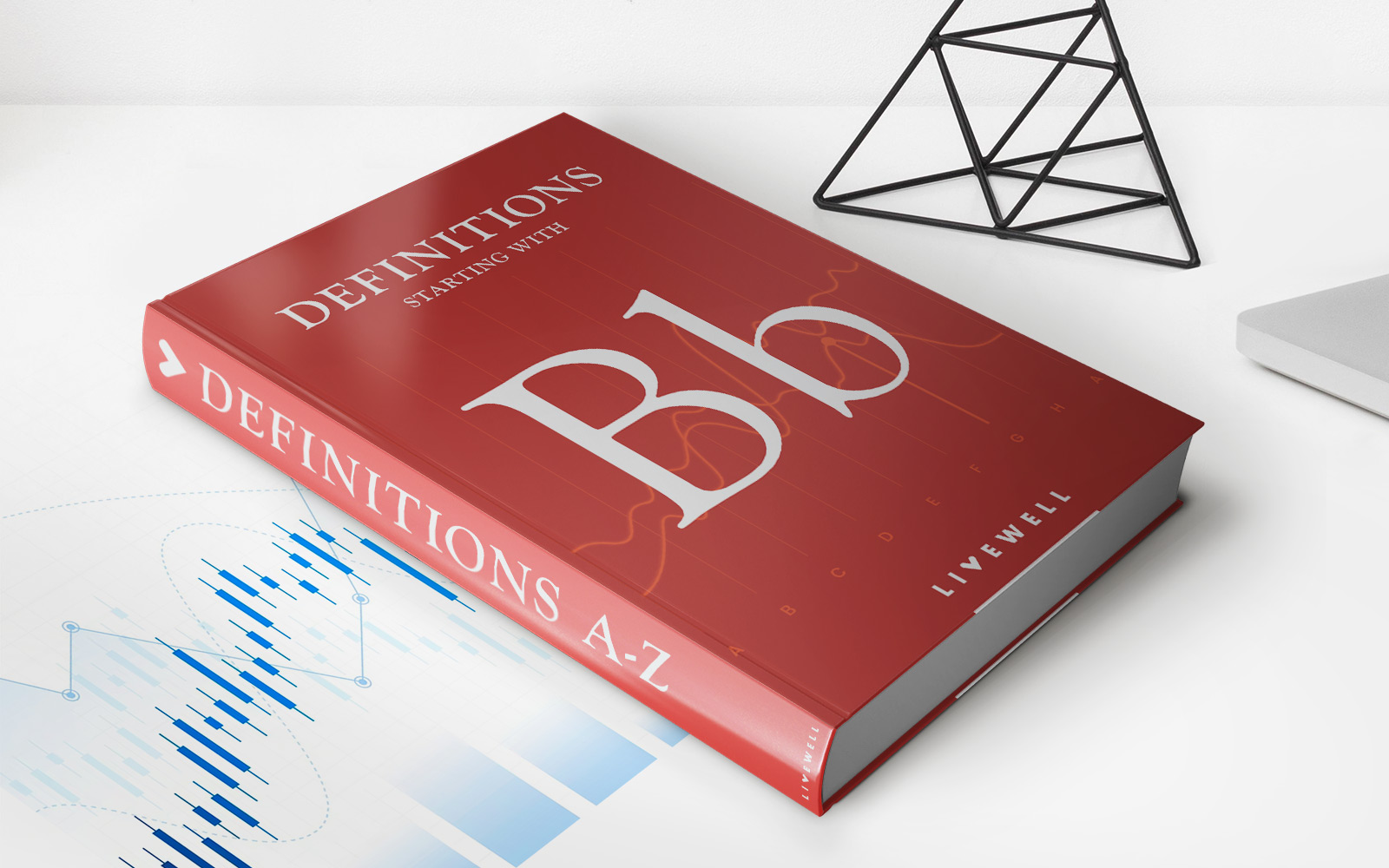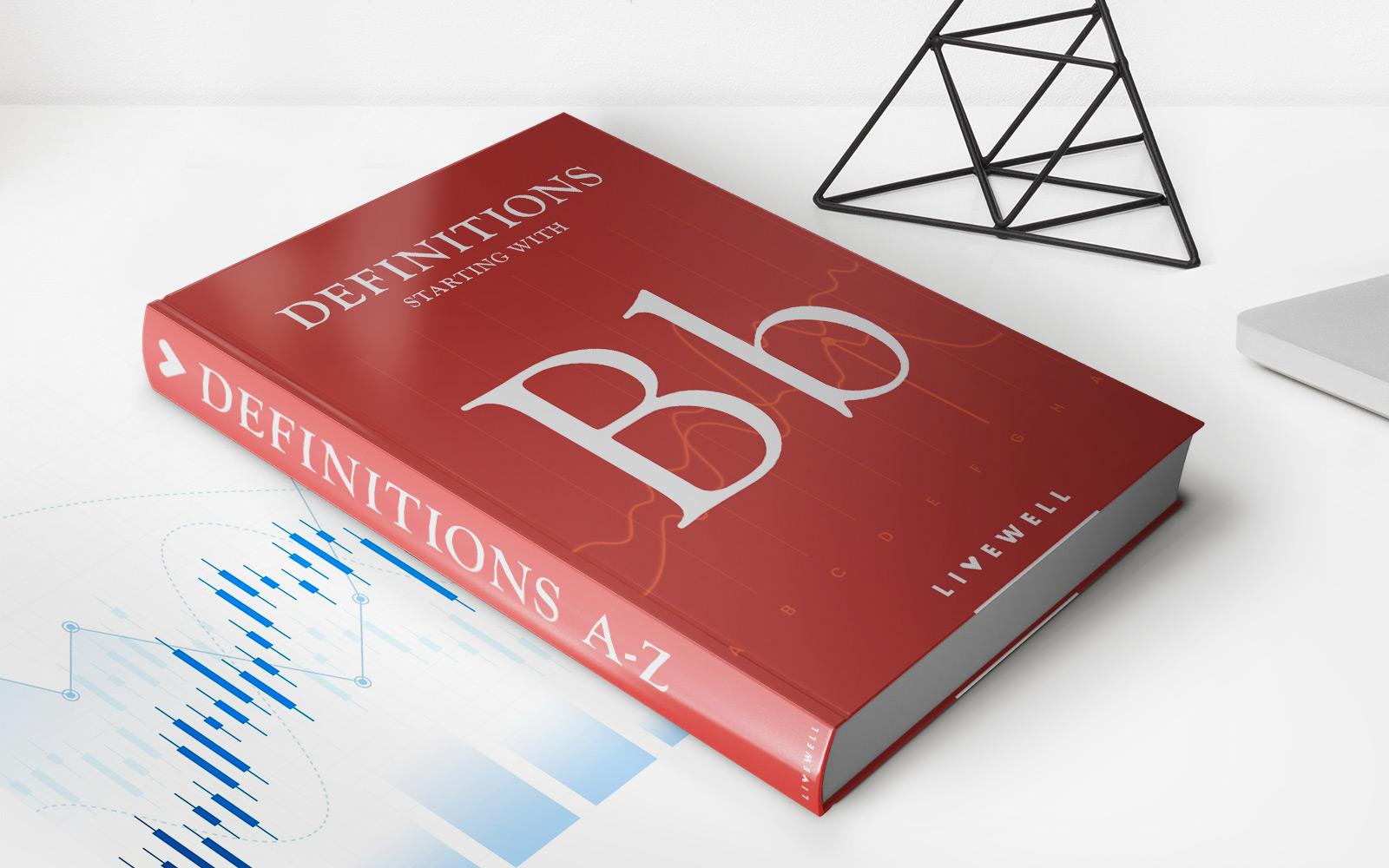

Finance
What Is Beneficial Owner In Banking
Published: October 13, 2023
Discover the concept of beneficial ownership in the world of finance and banking. Gain insights into how this term affects financial transactions and ownership rights.
(Many of the links in this article redirect to a specific reviewed product. Your purchase of these products through affiliate links helps to generate commission for LiveWell, at no extra cost. Learn more)
Table of Contents
- Introduction
- Definition of Beneficial Owner
- Importance of Identifying Beneficial Owners in Banking
- Regulatory Requirements for Identifying Beneficial Owners
- Methods for Determining Beneficial Ownership
- Common Challenges in Identifying Beneficial Owners
- Consequences of Failing to Identify Beneficial Owners
- Best Practices for Identifying Beneficial Owners
- Conclusion
Introduction
In the world of banking and finance, ensuring transparency and accountability is crucial. One fundamental aspect of this is identifying the beneficial owners of accounts and assets. The concept of beneficial ownership refers to the individuals who ultimately enjoy the benefits and control over these accounts and assets, even if their names may not appear on official documentation.
Beneficial ownership plays a vital role in combatting financial crimes such as money laundering, terrorist financing, and tax evasion. By uncovering the true owners behind a transaction or entity, authorities can trace illicit funds and hold accountable those responsible for illegal activities.
While the term “beneficial owner” might seem straightforward, the complexity lies in determining who exactly qualifies as a beneficial owner. This article will delve into the definition of beneficial owner, the importance of identifying them in the banking industry, regulatory requirements, methods for determining beneficial ownership, common challenges faced, consequences of failing to identify them, and best practices for accurate identification.
Understanding the concept of beneficial ownership allows banks and financial institutions to fulfill their due diligence responsibilities and contribute to a safer and more transparent financial system. By proactively identifying and monitoring beneficial owners, they can detect and prevent potential risks associated with illegal financial activities.
Join us as we explore the intricacies of beneficial ownership in banking and the significance it holds in ensuring the integrity of the financial sector.
Definition of Beneficial Owner
The term “beneficial owner” refers to the individual or individuals who ultimately enjoy the benefits of ownership and exercise control over a particular asset or account, even if their names are not directly listed as legal owners. It is essential to distinguish between the legal owner, who is registered as the owner on official documents, and the beneficial owner, who has the true ownership and control.
In the context of banking, beneficial owners are the individuals who hold a significant interest in a corporate entity, trust, or other legal structure. They may be the ones who derive financial benefits from the entity, make key decisions, or have the power to influence its operations.
The determination of beneficial ownership typically involves considering various factors, such as the level of control exercised, the ability to derive economic benefits, and the relationship with the legal owner. It is not merely based on formal ownership titles but focuses on identifying the individuals who have the ultimate control and benefit from the asset or account.
It is important to note that beneficial ownership extends beyond individuals and can include entities as well. In cases where a corporate entity or trust is the legal owner, the beneficial owners would be the individuals who own or control that entity.
For example, let’s say Company ABC is owned by a trust. The trust, as the legal owner, is registered on the official documentation. However, the beneficiaries of that trust, who may be individuals or other entities, would be considered the beneficial owners as they are the ones who have the right to enjoy the trust’s assets and control its activities.
In summary, the definition of beneficial owner entails identifying the individuals or entities that ultimately hold economic benefits and control over an asset or account, regardless of who is listed as the legal owner.
Importance of Identifying Beneficial Owners in Banking
The identification of beneficial owners is of paramount importance in the banking industry. It serves several critical purposes that help maintain the integrity of the financial system and mitigate the risks associated with illicit financial activities. Here are some key reasons why identifying beneficial owners is crucial:
- Transparency and Accountability: Identifying beneficial owners promotes transparency and accountability in banking transactions. By understanding who ultimately owns and controls an account or asset, banks can ensure that the funds are handled responsibly, and the transactions are conducted lawfully. This transparency is particularly crucial in preventing money laundering, terrorist financing, and other financial crimes.
- Risk Mitigation: Identifying beneficial owners allows banks to assess the potential risks associated with a particular account or entity. By knowing who is behind a transaction, banks can evaluate the legitimacy of the funds and the purpose of the transaction. This helps in detecting and mitigating the risk of fraudulent activities, such as using shell companies to conceal illegal funds or engaging in tax evasion.
- Compliance with Regulations: Regulatory authorities worldwide have implemented rigorous measures to combat financial crimes. Identifying beneficial owners is a key requirement in meeting these regulations. Banks are obligated to adhere to anti-money laundering (AML) and know-your-customer (KYC) regulations, which explicitly mandate the identification and verification of beneficial owners. Compliance with these regulations not only ensures legal compliance but also helps maintain a strong reputation and build trust with regulators and customers.
- Prevention of Financial Crimes: Identifying beneficial owners plays a significant role in preventing and deterring various financial crimes, such as money laundering, fraud, corruption, and terrorist financing. By uncovering the ultimate beneficiaries, authorities can trace the movement of funds and identify any suspicious patterns or connections. This enables early detection and intervention to disrupt illicit activities and protect the financial system from being exploited for illegal purposes.
- Enhanced Due Diligence: Identifying beneficial owners allows banks to conduct enhanced due diligence on high-risk customers or entities. Detailed knowledge of the ultimate owners helps banks assess the potential for reputational, legal, or financial risks associated with a particular account. It enables banks to tailor their risk management strategies and implement appropriate risk mitigation measures for those customers or entities.
In summary, the identification of beneficial owners in banking is crucial for promoting transparency, mitigating risks, complying with regulations, preventing financial crimes, and ensuring enhanced due diligence. By accurately identifying and verifying beneficial owners, banks can contribute to the overall integrity and stability of the financial system.
Regulatory Requirements for Identifying Beneficial Owners
In order to combat financial crimes and ensure transparency, regulatory authorities have introduced specific requirements for identifying beneficial owners in the banking industry. These regulations aim to strengthen the due diligence processes and enhance the ability to detect and prevent illicit financial activities. Here are some common regulatory requirements for identifying beneficial owners:
- Anti-Money Laundering (AML) Regulations: AML regulations, which exist in various jurisdictions, require banks to identify and verify the beneficial owners of their customers. This includes conducting thorough customer due diligence (CDD) processes to understand the ownership structure, control, and beneficiaries of corporate entities or trusts. Banks must obtain accurate and up-to-date information regarding the individuals who are the ultimate beneficiaries of accounts and assets.
- Know Your Customer (KYC) Regulations: KYC regulations mandate that banks have a complete understanding of their customers and their associated risks. Identifying beneficial owners is a fundamental part of the KYC process. Banks are required to collect sufficient information and documentation to ascertain the individuals who have the ultimate control and economic benefit over the customer’s accounts or assets. This includes verifying the identities of the beneficial owners and assessing their legitimacy.
- Ultimate Beneficial Owner (UBO) Registers: Some jurisdictions have implemented UBO registers, which are centralized databases that store information about the beneficial owners of companies or legal entities. Under these regulations, banks may be required to cross-reference the information provided by customers against the UBO register to ensure accuracy and completeness. This helps in reducing the risk of fraudulent representation and provides a reliable source of beneficial ownership information.
- Foreign Account Tax Compliance Act (FATCA): FATCA, a US legislation aimed at combating tax evasion, imposes obligations on foreign financial institutions to identify and report information on US account holders. This includes identifying the beneficial owners of accounts to determine if they fall under the scope of FATCA reporting requirements.
- Common Reporting Standard (CRS): CRS, developed by the Organisation for Economic Co-operation and Development (OECD), is a global standard for automatic exchange of financial account information. Financial institutions are required to collect and report information about the beneficial owners of accounts held by non-resident individuals or entities in participating jurisdictions. This ensures consistency in identifying beneficial owners for tax purposes.
Non-compliance with these regulatory requirements can result in severe penalties, reputational damage, and legal consequences for banks. Therefore, it is crucial for banks to have robust processes and systems in place to accurately identify and verify the beneficial owners of their customers’ accounts and assets.
By adhering to these regulations, banks can contribute to the global efforts in combating financial crimes, maintaining the integrity of the financial system, and protecting themselves from the risks associated with illicit activities.
Methods for Determining Beneficial Ownership
Determining beneficial ownership can be a complex task, but there are several methods and approaches that banks and financial institutions can utilize to accurately identify the individuals who have ultimate control and benefit over an account or asset. Here are some common methods for determining beneficial ownership:
- Ownership Structure Analysis: Banks can analyze the ownership structure of a corporate entity or trust to determine the individuals who hold significant ownership stakes or exercise control. This involves examining the hierarchy, shareholding patterns, and voting rights within the entity. By assessing the shareholding percentages and the ability to influence decision-making, banks can identify the beneficial owners.
- Due Diligence Questionnaires: Banks often employ due diligence questionnaires to gather comprehensive information about customers and their beneficial owners. These questionnaires typically cover a range of topics, including ownership, control, and relationship with the legal entity. By requesting detailed responses, such as the percentage of ownership, voting rights, and authority to direct the use of funds, banks can obtain crucial insights into the beneficial ownership structure.
- Publicly Available Information: Banks can utilize publicly available information, such as company registries, regulatory filings, and publications, to identify the beneficial owners of corporate entities. These sources can provide information about the individuals who are registered as directors, shareholders, or key executives of the entity. Additionally, news articles or business profiles may shed light on individuals who wield significant influence and control within an organization.
- Know Your Customer (KYC) Process: The KYC process involves gathering documentation and verifying the identity of customers and their beneficial owners. Banks rely on various documents such as passports, identification cards, or corporate registration documents to establish the authenticity of individuals. Through this process, banks obtain accurate information about the beneficial owners and establish a clear record of their ownership interests.
- Investigative Research: In cases where the ownership structure is complex or concealed, banks may engage in investigative research. This involves using specialized resources and databases to gather intelligence on the beneficial owners. Investigative research may include searching public records, conducting media searches, or utilizing third-party data providers to supplement the information provided by the customer.
- Reputable Data Providers: Banks can leverage the services of reputable data providers that specialize in aggregating and verifying beneficial ownership information. These providers maintain databases that compile data from various reliable sources, ensuring the accuracy and completeness of beneficial ownership records. By accessing such databases, banks can streamline their processes and enhance their ability to identify the ultimate beneficiaries.
Determining beneficial ownership requires a combination of these methods, as well as a deep understanding of the regulatory requirements and compliance obligations. By employing a robust approach that combines analysis, due diligence, research, and access to reliable data sources, banks can effectively identify and verify the beneficial owners of accounts and assets, contributing to the overall integrity of the financial system.
Common Challenges in Identifying Beneficial Owners
Identifying beneficial owners in the banking industry can present several challenges due to the complex nature of corporate structures, legal entities, and the potential for obfuscation. These challenges can hinder the accurate determination of who truly holds control and benefit over an account or asset. Here are some common challenges encountered when identifying beneficial owners:
- Complex Ownership Structures: Corporate entities or legal structures often have complex ownership arrangements with multiple layers of ownership. This complexity can make it difficult to trace the ultimate beneficiaries and understand who holds the majority control. The use of shell companies or nominee directors further complicates the process, as they may be used to conceal the true beneficial owners.
- Opaque Ownership Transfers: Ownership transfers that occur through intricate transactions or legal mechanisms can obscure the identification of beneficial owners. The use of trusts, foundations, or offshore entities can create additional layers of complexity, making it challenging to trace the flow of economic benefits and control. The lack of transparency in these transfers can impede efforts to accurately determine beneficial ownership.
- Nominee Structures: Beneficial owners often utilize nominee structures to maintain anonymity and distance themselves from direct ownership. Nominee directors or shareholders are individuals or entities who hold legal ownership on behalf of the beneficial owner. Identifying the beneficial owner behind a nominee structure requires thorough investigation and analysis to uncover the true controllers and decision-makers.
- Limited Access to Information: Banks may face challenges accessing comprehensive and reliable information about potential beneficial owners. Regulatory restrictions, privacy laws, or the availability of beneficial ownership records can vary across different jurisdictions. Limited access to information can hinder the ability to accurately identify the ultimate beneficiaries, especially in cases involving offshore entities or jurisdictions with less transparent corporate regulations.
- False or Incomplete Information: Customers may provide false or incomplete information regarding their beneficial owners to maintain anonymity or evade scrutiny. This can be intentional or unintentional, but it poses a significant challenge for banks aiming to conduct thorough due diligence. Relying solely on the information provided by customers may result in inaccurate or incomplete identification of beneficial owners.
- Changing Ownership Structures: Ownership structures and beneficial ownership arrangements can change over time due to various factors such as mergers, acquisitions, or reorganizations. Keeping up with these changes and ensuring the accurate and up-to-date identification of beneficial owners can be challenging. Failure to track these changes can lead to a substantial gap in the knowledge of who truly controls and benefits from an account or asset.
Overcoming these challenges requires a combination of diligent investigation, advanced technological tools, collaboration with regulatory authorities, and international cooperation. Banks must continually refine their processes to address these challenges and ensure that their identification of beneficial owners remains accurate and up-to-date. By doing so, they can contribute to a more transparent and resilient financial system.
Consequences of Failing to Identify Beneficial Owners
The failure to accurately identify beneficial owners in the banking industry can have significant consequences for financial institutions and the overall integrity of the financial system. Regulatory authorities and global organizations have taken a strong stance against non-compliance and inadequate due diligence in this area. Here are some of the consequences that may arise from failing to identify beneficial owners:
- Legal and Regulatory Penalties: Banks that fail to comply with regulatory requirements and properly identify beneficial owners can face severe penalties. Regulatory authorities have the power to impose fines, suspend licenses, or even initiate criminal investigations. These penalties aim to deter non-compliance and ensure that banks prioritize the identification and verification of beneficial owners.
- Reputational Damage: Failing to identify beneficial owners can result in significant reputational damage for financial institutions. A failure to combat financial crimes and prevent illicit activities can undermine customer trust and confidence. Reputational damage can lead to a loss of customer base, difficulty in attracting new clients, and impaired relationships with regulatory authorities, shareholders, and other stakeholders.
- Increased Risk Exposure: Failing to accurately identify beneficial owners exposes banks to increased risk. Transactions involving undisclosed or improperly identified beneficial owners can be associated with money laundering, terrorist financing, or other illegal activities. Banks can become unwitting participants in these activities, leading to financial losses, regulatory scrutiny, and damage to their risk management frameworks.
- Weakened AML and KYC Controls: Inadequate identification of beneficial owners weakens a bank’s anti-money laundering (AML) and know-your-customer (KYC) controls. This undermines the institution’s ability to detect and prevent financial crimes effectively. Regulators expect banks to have robust due diligence processes in place to identify beneficial owners and ensure compliance with AML and KYC regulations.
- Exposure to Financial Crime Risks: Failing to identify beneficial owners increases the risk of financial crimes within the banking system. Banks may inadvertently facilitate money laundering, fraud, or terrorist financing by allowing accounts and assets to be controlled by unknown or undisclosed parties. This not only poses a risk to the financial institution but also contributes to broader illicit activities.
- Deterioration of Internal Controls: Inadequate identification of beneficial owners signifies weaknesses in a bank’s internal control framework. It indicates shortcomings in the processes and systems designed to detect and prevent financial crimes. Regulators require banks to have robust controls in place, and a failure to identify beneficial owners exposes gaps in these controls and highlights deficiencies in the institution’s risk management practices.
It is vital for banks to prioritize the accurate identification and verification of beneficial owners to mitigate these consequences. Establishing rigorous due diligence processes, investing in advanced technological solutions, and fostering a culture of compliance can safeguard banks from legal penalties, reputational damage, and increased risk exposure. By complying with regulatory requirements and proactively identifying beneficial owners, banks can contribute to a more secure and transparent financial system.
Best Practices for Identifying Beneficial Owners
Identifying beneficial owners accurately is crucial for banks to meet regulatory requirements, mitigate risks, and maintain the integrity of the financial system. Implementing best practices in the identification process ensures thorough due diligence and helps prevent financial crimes. Here are some best practices for identifying beneficial owners:
- Establish Robust Due Diligence Procedures: Develop and implement comprehensive due diligence procedures that explicitly address the identification and verification of beneficial owners. These procedures should encompass data collection, documentation requirements, and ongoing monitoring to ensure accurate and up-to-date information about beneficial owners.
- Perform Enhanced Know Your Customer (KYC) Checks: Conduct enhanced KYC checks to gather adequate information about customers and their beneficial owners. This includes verifying the identities of beneficial owners through reliable and independent sources. Utilize advanced technology solutions and data providers to automate and streamline the KYC process.
- Utilize Technology and Data Analytics: Leverage technology, such as data analytics software and artificial intelligence, to enhance the identification process. Intelligent algorithms can analyze complex ownership structures, detect patterns, and identify potential red flags for further investigation. Adopting advanced technology improves efficiency, accuracy, and the ability to identify ultimate beneficiaries.
- Implement Regular Risk Assessments: Conduct periodic risk assessments to evaluate exposure to potential risks associated with beneficial ownership. Assess vulnerabilities in existing controls and processes, and make necessary improvements to ensure robust risk management practices.
- Enhance collaboration with Regulatory Authorities: Foster close collaboration with regulatory authorities to stay updated on emerging regulatory requirements and industry best practices. Engage in regular dialogue, participate in industry working groups, and seek guidance to ensure compliance and align processes with regulatory expectations.
- Develop Clear Policies and Procedures: Establish clear and well-documented policies and procedures that outline the steps for identifying and verifying beneficial owners. Train staff on these policies, ensuring they have a solid understanding of the regulatory requirements and their role in adhering to them.
- Continuous Monitoring and Auditing: Implement systems for continuous monitoring and auditing to ensure ongoing compliance with beneficial ownership requirements. Regularly review and update customer records, conduct periodic audits of the identification process, and perform internal and external reviews to assess the effectiveness of controls.
- Engage in International Cooperation: Foster collaboration and information sharing with other financial institutions and international counterparts. Participate in initiatives aimed at combating financial crimes, such as information exchange forums and intelligence sharing platforms.
- Stay Updated with Regulatory Changes: Keep abreast of changes in regulatory requirements related to beneficial ownership. Stay informed about legal developments, new guidelines, and changes in reporting obligations to ensure compliance and adjust identification processes accordingly.
By adopting these best practices, banks can enhance their ability to accurately identify beneficial owners and mitigate the risks associated with financial crimes. By prioritizing compliance, utilizing advanced technology, and maintaining robust internal controls, banks can contribute to a more secure and transparent financial system.
Conclusion
Identifying beneficial owners in the banking industry is a critical aspect of ensuring transparency, combating financial crimes, and maintaining the integrity of the financial system. The concept of beneficial ownership goes beyond formal ownership titles, focusing on individuals who have ultimate control and enjoy the economic benefits of accounts and assets.
In this article, we explored the definition of beneficial owners and highlighted their significance in banking. We discussed the importance of identifying beneficial owners in promoting transparency, mitigating risks, complying with regulations, preventing financial crimes, and enhancing due diligence practices. We also outlined the regulatory requirements that banks must adhere to, such as anti-money laundering (AML) and know-your-customer (KYC) regulations, which mandate the accurate identification and verification of beneficial owners.
Additionally, we examined the methods for determining beneficial ownership, including ownership structure analysis, due diligence questionnaires, publicly available information, and investigative research. We also discussed the common challenges faced in accurately identifying beneficial owners, ranging from complex ownership structures to limited access to information.
The consequences of failing to identify beneficial owners can be severe, including legal and regulatory penalties, reputational damage, increased risk exposure, weakened AML and KYC controls, and exposure to financial crime risks. To mitigate these consequences, we recommended best practices, such as establishing robust due diligence procedures, utilizing technology and data analytics, implementing regular risk assessments, and engaging in international cooperation.
In conclusion, identifying beneficial owners is an essential process for banks to uphold transparency, comply with regulations, and combat financial crimes. By employing accurate and thorough methods, banks can enhance their ability to identify beneficial owners and contribute to a secure and resilient financial system. It is crucial for banks to stay vigilant, adapt to changing regulatory requirements, and continuously improve their processes to ensure the accurate identification of beneficial owners and maintain the trust and confidence of regulators and customers.














